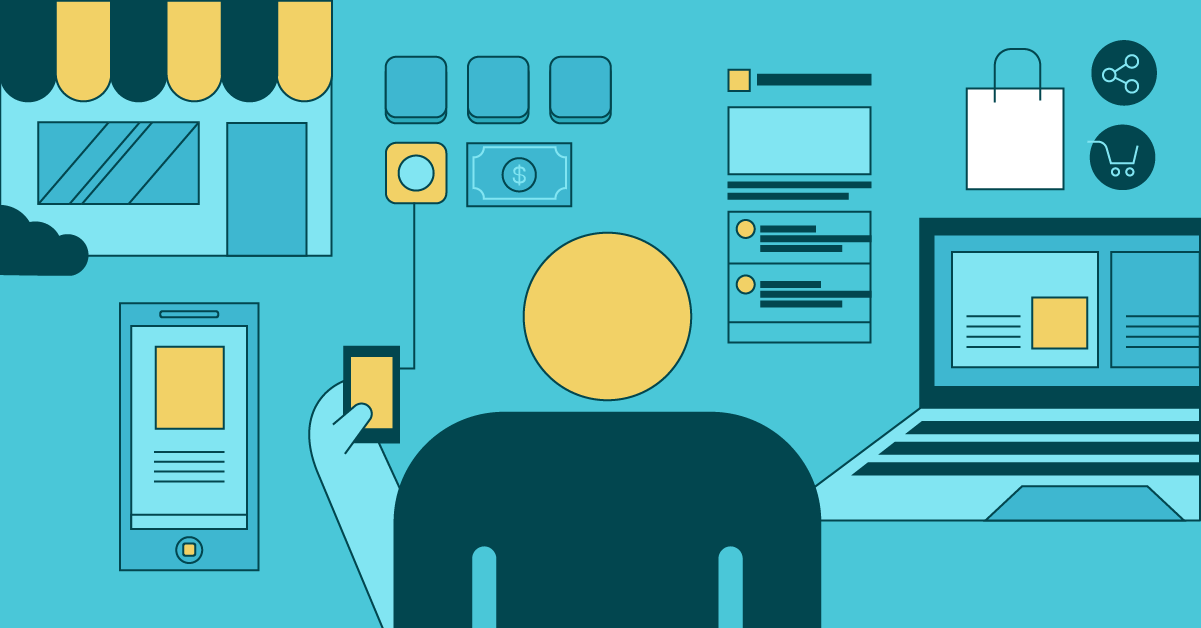It’s easy to understand why contactless services have remained popular since a critical mass of brands began introducing them a few years ago. All you have to do is compare and contrast the word “contact” with “connect.”
When a customer contacts a brand, for example, it’s often because the customer wants the brand’s help in choosing or finding a product, or perhaps to get support. If it’s the brand contacting the customer, most likely the brand is attempting to market its products and services. Either way, it marks the beginning of a conversation.
A connection between a brand and its customers is altogether different – and richer.
Brands that truly connect with customers reflect how well they know them through their strategic use of data. They personalize offers and services and take time to listen carefully to any feedback. Customers who feel connected to a brand – which may happen through a wide range of digital channels – typically remain loyal and share their positive experiences with others. It’s more of an ongoing conversation.
Contactless services may have ramped up in response to COVID-19 restrictions, but successful brands have recognized how they have enhanced customer experiences.
By removing all the friction in making contact with customers – from a “sign here” to fumbling bills and pocket change between hands – brands are able to be more productive and customers enjoy greater efficiency.
This explains why contactless services have proven more than a temporary measure employed during the height of the pandemic. In fact, survey data collected as part of Salesforce’s 2021 Small Business Trends Report found 79% of small and medium-sized businesses (SMBs) plan to keep contactless services as a permanent part of the customer experience they offer.
The technology to support contactless services is readily available, and represents a real “win-win” in the sense that both brands and customers stand to benefit from this shift. The advantages include:
1. An end to the endless wait at checkout
No matter how much customers love your products, none of them likely enjoy getting in a long queue waiting to hand over their money. As people ahead of them fumble through wallets and purses to find the exact amount they need, the process can take even longer. Contactless payments rapidly accelerate payments with a simple tap, allowing everyone to get out the door sooner. Even self-checkouts become possible through contactless technologies.
2. A stronger (and easier) approach to securing transactions
By now, most of us walk around carrying multiple debit cards, credit cards, and other credentials. Each of these may require a different personal identification number (PIN). That can add up to a lot of memorization for consumers that want to focus on other things. Instead of forgetting their PIN and being unable to complete a transaction, contactless payments provide a compelling “tap and go” alternative.
3. A means to embrace the shift to mobile-first behaviour patterns
Companies may still have a formal area set up with POS devices and cashiers, but they’re no longer limited to that, either. Instead, they can equip their associates with smartphones or tablets that serve as a mobile POS. This allows transactions to happen on the store floor, literally meeting customers where they are and providing more helpful service.
4. A quicker way to provide curbside pickup options
The customer journey now often starts online, where people not only research products but place orders, which they can pick up at a nearby location. Instead of forcing people to come into a store, however, brands can have team members meet customers and place items right in their truck, then leveraging contactless services to confirm receipt.
5. A scannable solution to providing information and access
When brands put up signage that ask customers to visit a web site, they know many customers won’t bother. It would mean staying in front of a sign long enough to type in a URL and then navigate to a specific page.
Contrast that with contactless services that allow the same customers to scan a QR code. They can reach specific pages instantly, or use QR codes on their phones to serve as tickets to special events or even room keys when they’re staying at a hotel.
6. A proactive approach to providing updates and answers
Another traditional form of contact between brands and customers is when an employee has to inform a customer when it’s their turn to see a specialist, or when work on an order or repair has been done. Employees have often had to physically walk around to relay simple messages to customers.
In that sense, SMS and text messages represent a highly effective contactless service too. People are often checking their phones for other notifications anyway, so you’re likely to get their attention easily by pinging them as appropriate.
7. A healthy reminder of how to limit the spread of infections
Even if COVID-19 is not spreading as much as it once was, there are plenty of times when common colds and other viruses are making their way around. Contactless services combine convenience with an ongoing way to ensure germs aren’t being engaged as part of a business transaction.
Next steps with contactless services
As you reap the rewards of contactless services, don’t be afraid to actively market them to your customers! Whether through in-store signage, email newsletters, social media ads or other relevant channels, let customers know they can expect these options to become a regular part of the customer experience you’re delivering.
Contactless services will probably soon become much more than a convenience. They’ll evolve into the standard best practices that inform customer expectations across Canada. By embracing them now, you’ll show you’re “in touch” with what people really want.


